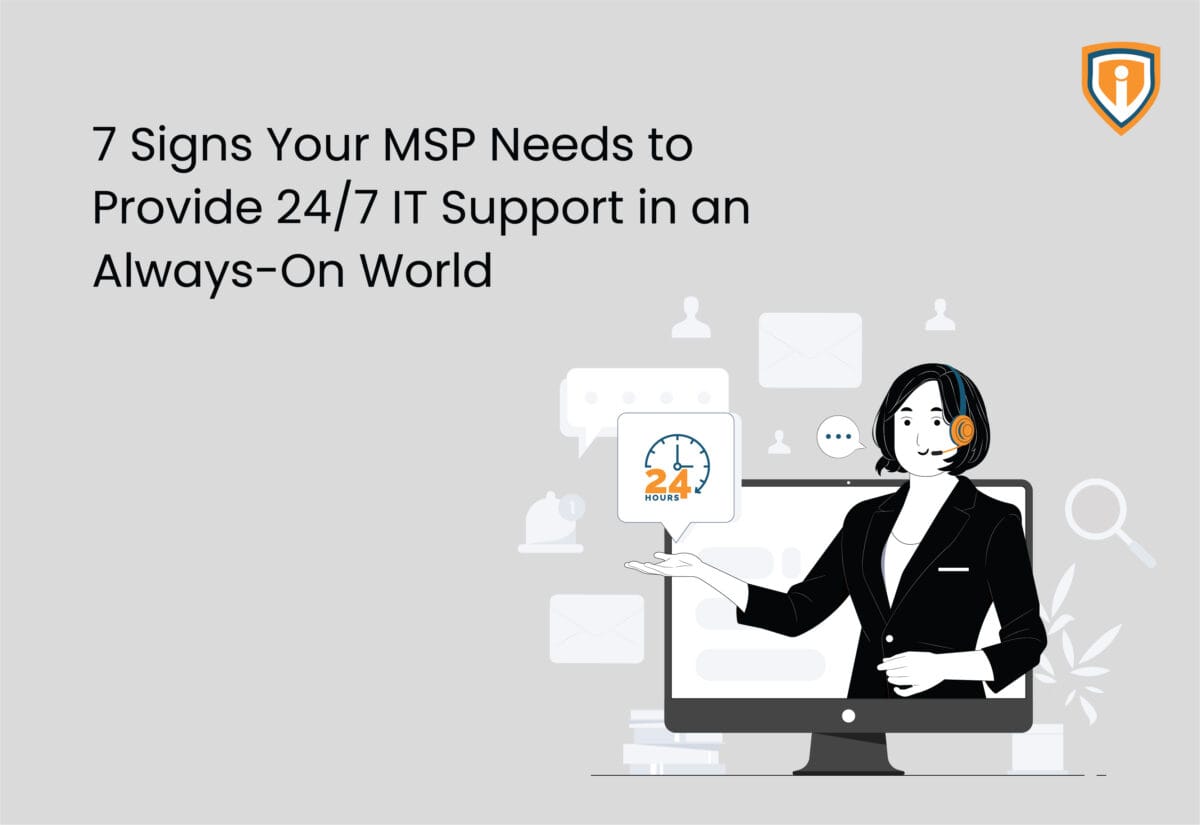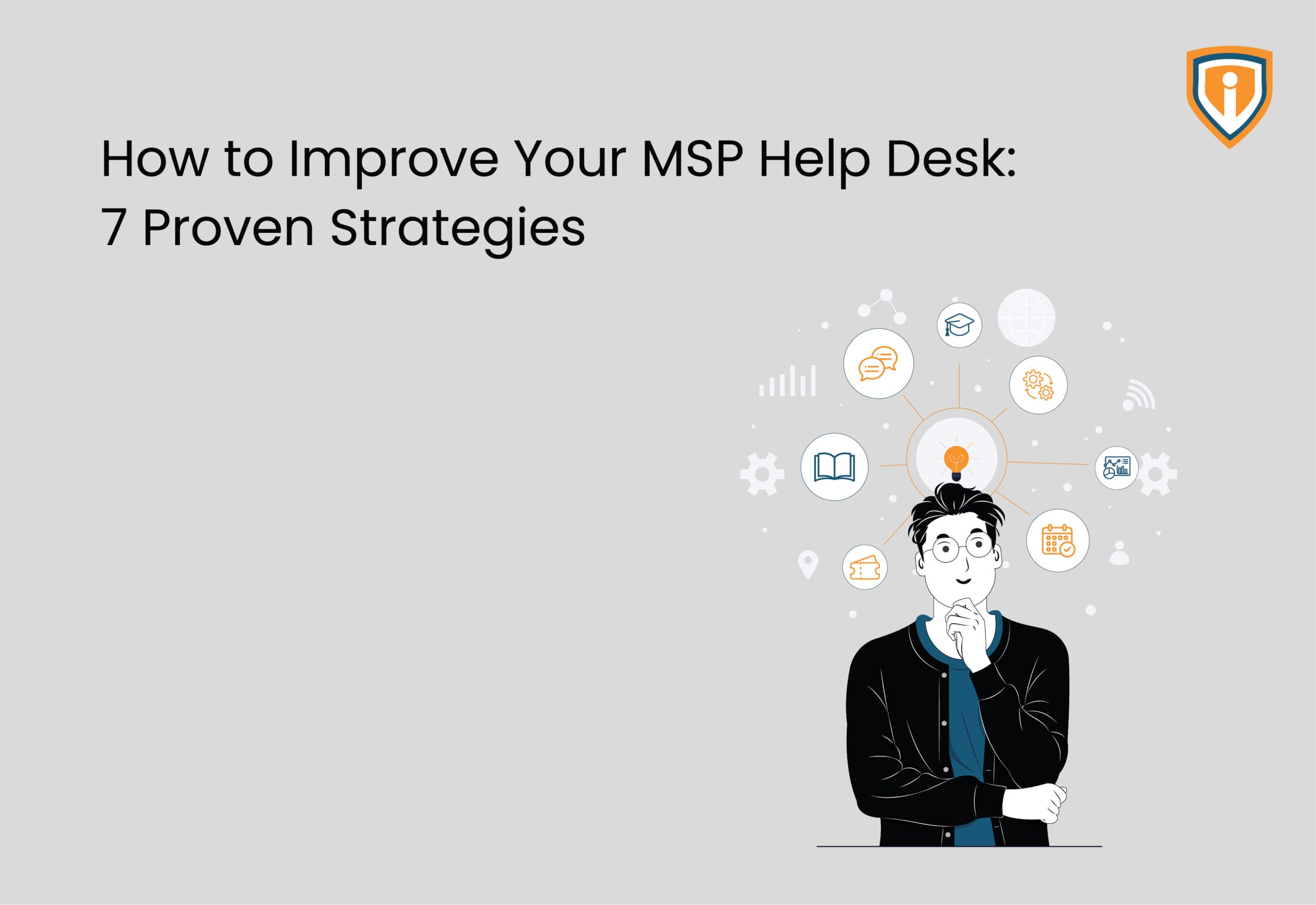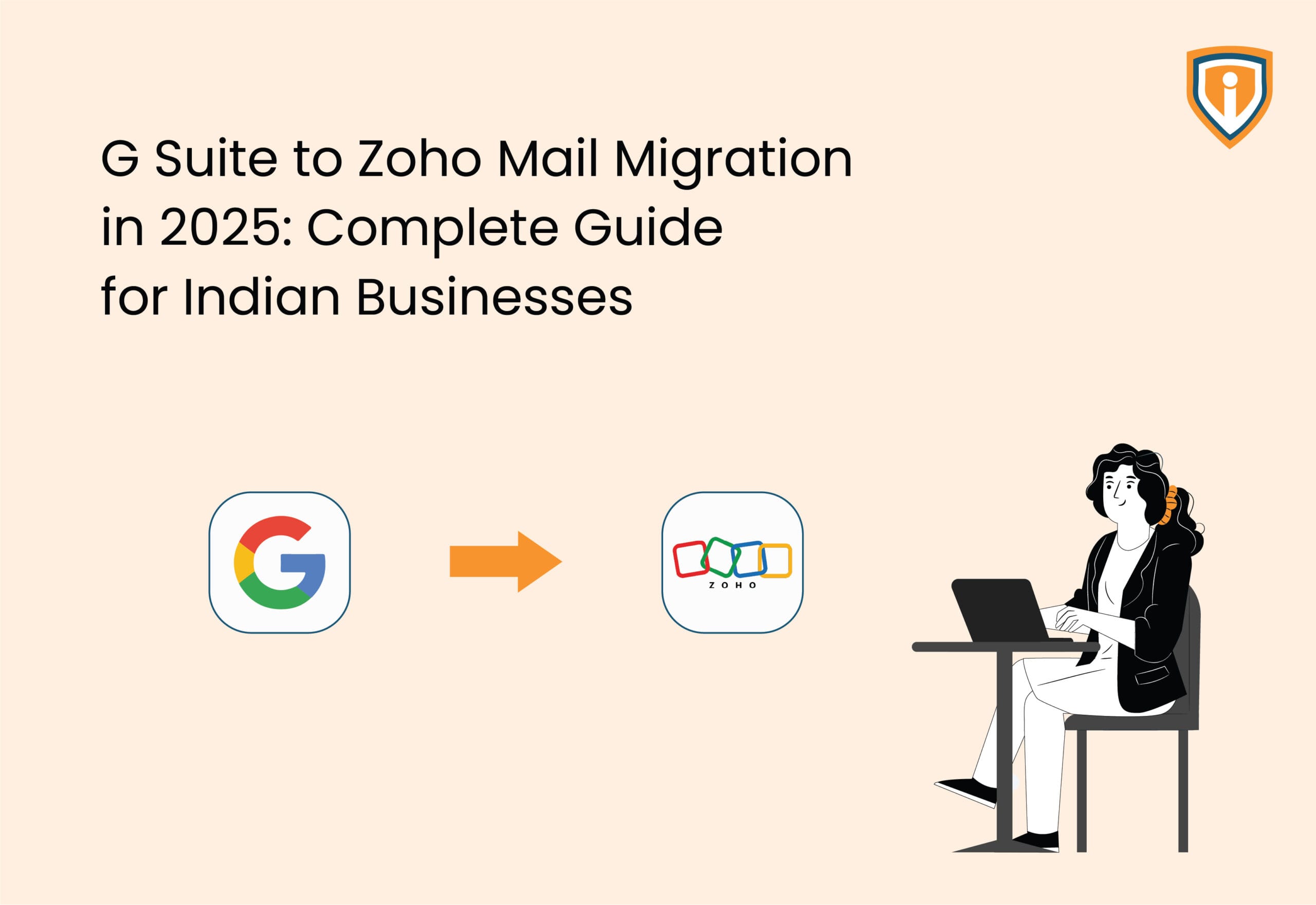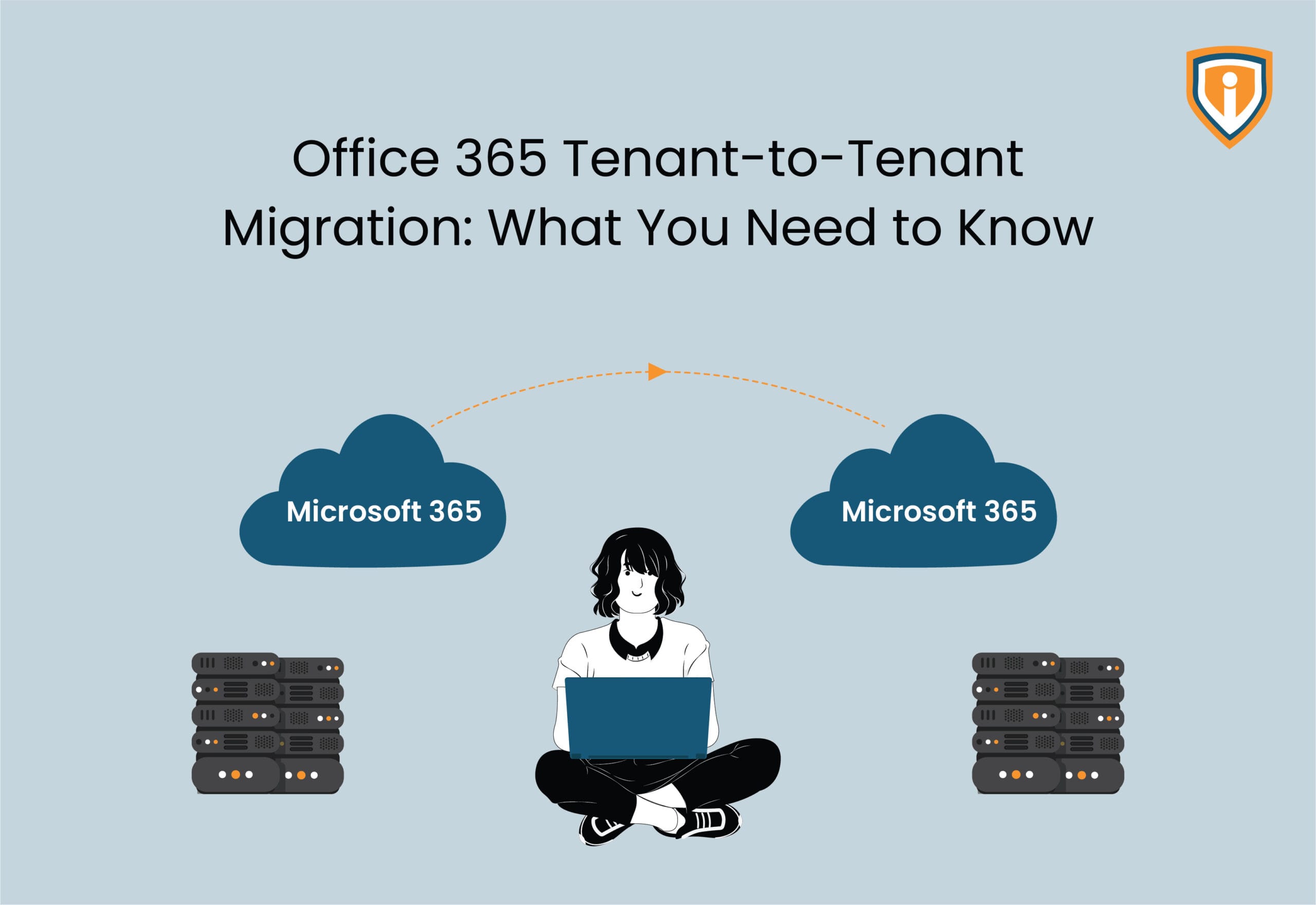Some shifts in business happen quietly. One month, your MSP team handles most things during business hours. By the next quarter, you’re half-living out of a ticket queue that doesn’t seem to sleep. If your phone’s alert tone feels like it’s burned into your nervous system, it’s not just “a busy week” — it’s a sign the demands have changed.
This isn’t your typical growth story.
“The global managed services market was valued at USD 297 BN in 2024 and is on track to climb to nearly USD 879 BN by 2032, at a 15% annual growth rate.“
– Fortune Business Insights.
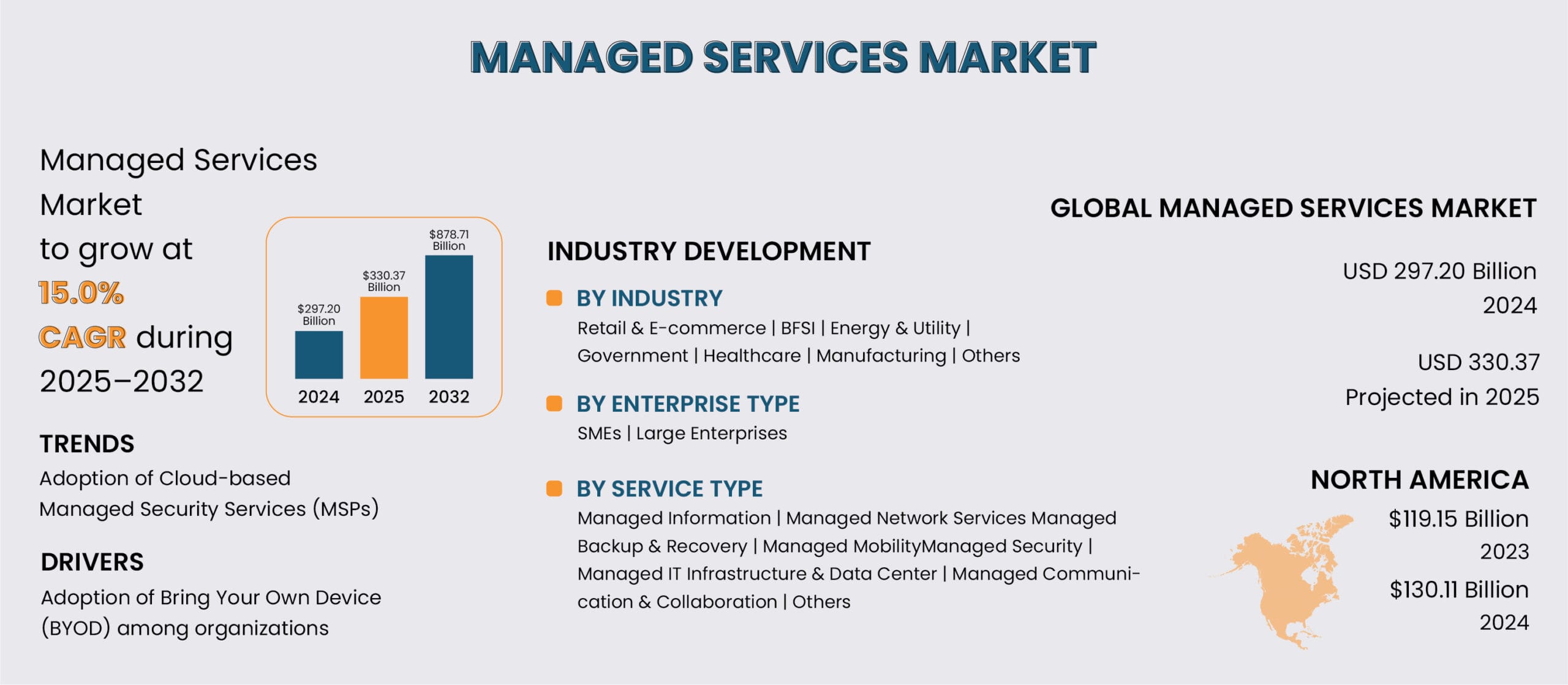
courtesy: Fortune Business Insights
What that means for your MSP isn’t just about larger numbers on a spreadsheet. It means enterprises aren’t only looking for keep-the-lights-on support anymore; they want strategic partners who help shape their tech strategy, not just patch it.
The tricky part?
Those demands don’t announce themselves in a neat, calendar-friendly way. They creep in. A late-night security patch here. A holiday weekend outage there. And eventually, you realize the gap isn’t in your team’s skill — it’s in your coverage.
That’s the moment when NOC services for MSPs stop being a “someday” option and start looking like the only sensible way forward.
What are 24/7 NOC Services for MSPs?
A Network Operations Center (NOC) provides continuous monitoring, management, and incident response to keep client systems stable. For MSPs, running this in-house means high staffing costs, 24/7 coverage challenges, and frequent disruption from attrition.
Partnering with a master MSP offering white-label managed NOC services eliminates this overhead. They integrate as an extension of your team, handling alert monitoring, incident triage, patching, and infrastructure upkeep with established SLAs and escalation processes.
The result? MSP engineers stay focused on client strategy and project delivery, while the extended NOC team ensures uninterrupted service and uptime for your clients in the background.
Why Do MSPs Need a NOC in the First Place?
An MSP’s promise is simple: “We’ll keep you running.” Every client environment is a stack of moving parts — servers, endpoints, switches, cloud workloads, and backups — each capable of failing at 2 a.m.
InfoQ recently published Cockroach Labs’ State of Resilience 2025 Report, which notes that 55% of businesses encounter outages on a weekly basis and 8% are hit daily, underscoring the pervasiveness of downtime.
Every incident has a massive impact, including but not just limited to revenue loss, customer frustration, and internal chaos. In that context, a NOC is not just a monitoring function. It prevents missed alerts from turning into full-blown outages.
And in an age where a single missed alert can snowball into a breach or a costly outage, that reassurance is worth more than a clever SLA clause.
Challenges with 24×7 Outsourced NOC Solutions
Outsourcing your NOC to a third party can feel like giving someone the keys to your house. Trust matters. Process alignment matters even more.
- Tool mismatch: If their systems don’t sync with your PSA or RMM, you’ll waste time reconciling tickets.
- Different “urgency” culture: What you’d treat as a Sev-1, they might see as low priority unless you’ve agreed on definitions.
- Communication style: Some teams write tickets like engineers; others write like lawyers. Both can cause friction.
- Scope creep: Without a clear scope, you may find yourself paying for work that wasn’t in the plan.
Still, those obstacles are solvable. The MSPs that benefit most from outsourced coverage are the ones that treat onboarding as a joint operation, not just a handoff.
Top 5 Benefits of NOC Services
A well-run NOC doesn’t just lighten the load. It changes how an MSP operates financially, technically, and in how clients see you.
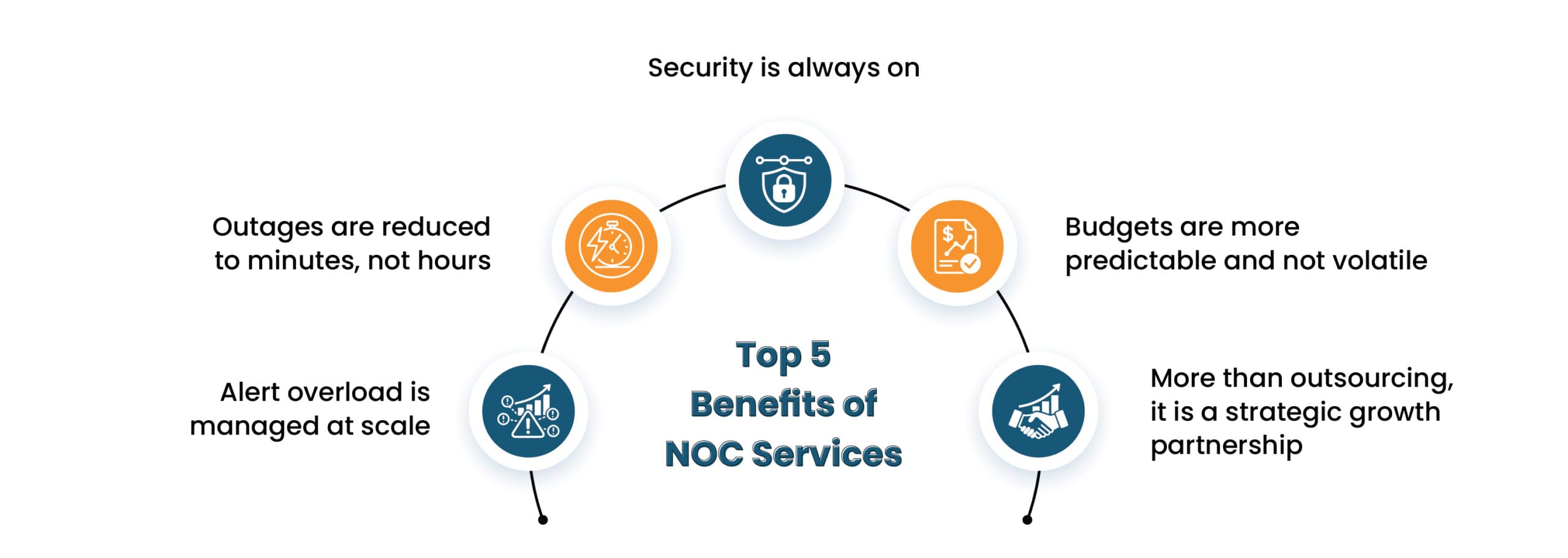
1. Alert overload is managed at scale
Low-level noise is filtered, tickets are prioritized, and real issues move forward with context. Engineers aren’t stuck firefighting every hour, which means they can finally focus on project work that matters to clients.
2. Outages are reduced to minutes, not hours
Regular checks on backups, patch windows, and disaster recovery plans keep failures from dragging into the next business day. That steadiness shows up directly in SLA reviews.
3. Security is always on
Most attacks hit when offices are quiet. With 24×7 NOC Services for MSPs, log monitoring and incident response run overnight, cutting risk and helping MSPs prove compliance in industries where audits are routine.
4. Budgets are more predictable and not volatile
Running your own after-hours team means overtime, turnover, and constant hiring. With external support, MSPs get predictable pricing — usually fixed fee or per-device, so costs stay steady even as client environments expand.
5. More than outsourcing, it is a strategic growth partnership
White-label NOC services align with your SLAs, work under your brand, and deliver clear reports on what was fixed, when, and how. That positions the MSP as more than a support desk. Clients see a partner who can scale with them.
7 Signs Your MSP Needs Outsourced NOC Services Right Now
Sign 1: Your team is still stuck in “pure reaction mode”
If your engineers spend most of their day swatting at new tickets instead of closing out the ones already open, you’re in the wrong rhythm. That constant reset kills productivity and morale. 24/7 NOC services for MSPs setup breaks that cycle by dealing with the noise — the alerts, the repetitive but critical fixes, before they drown your staff.
Sign 2: On-call shifts are driving people away
There’s a particular tone in someone’s voice when they’ve been woken by a 2 a.m. VPN outage, maybe for the 4th week in a row. Fatigue turns into mistakes, and mistakes turn into turnover. Passing those after-hours alerts to a managed NOC services partner can save you good engineers and, most importantly, spare you the recruitment scramble.
Sign 3: Clients know about incidents before you do
This one’s painful. A client rings you up to say their file server is down, and your monitoring hasn’t flagged it yet. You may recover operations, but your reputation takes the real hit. With 24/7 NOC Services, you flip that script: “We spotted an issue and resolved it before it affected your work.”
Sign 4: SLA breaches are becoming routine
Missing an SLA occasionally is one thing. Missing them enough that you have to explain it in quarterly reviews is another. When your coverage gaps cause delays in incident response, your metrics and your client relationships suffer.
Sign 5: Strategic projects keep getting pushed back
If your big migration project or security overhaul keeps stalling because the team is swamped with alerts, you’re not scaling — you’re treading water. An external NOC team can absorb the routine operational load, freeing your staff for higher-value work.
Sign 6: You’re turning down business to protect capacity
It sounds noble —“we don’t want to take on more than we can handle”, but it’s also a missed growth opportunity. Offloading 24/7 monitoring to NOC services for MSPs means you can expand your client base without breaking your team.
Sign 7: Security events are slipping through the cracks
Many threats don’t hit during business hours. Ransomware, brute-force login attempts, suspicious network activity —these can and do happen at night. If you can’t respond until morning, you’ve already given an attacker a head start. A true round-the-clock NOC can act in minutes, not hours.
Conclusion
Most MSPs don’t make the leap to 24×7 coverage because they enjoy spending more money. They make it because the cost of not doing so —in terms of client trust, staff retention, and missed opportunities is higher.
Recognizing these signs isn’t an admission of failure. It simply indicates your current setup can no longer keep pace with the demands. And in this business, the gap between “we handled it” and “we’re still handling it” is often just a matter of who’s watching when you’re not.
